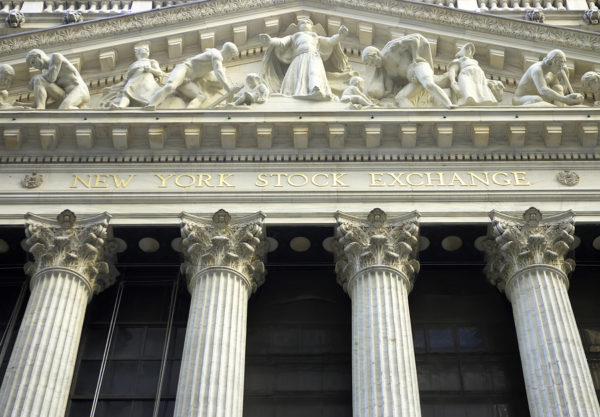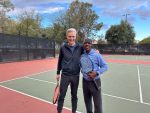Although the amount we save is likely to have a bigger impact on our well-being than how we invest our money, we still need to invest it wisely. Choosing among the myriad of savings and investment options available can be overwhelming. How can we know where is the best place to put our money? Here’s some perspective from an investment advisor.
Everybody Wants to “Help” You Invest.
Countless financial institutions are constantly clamoring for us to park a piece of our pie with them. Why? That is how they make money. Unless we bury our money in the backyard, someone is going to make money off of our money no matter where we park it, even if it merely sits in a bank account. This is not a problem as long as we receive the benefits we expect in return. In order to be sure that the financial institutions meet our objectives and not just their own, we must be clear about what we are trying to accomplish with each dollar we deposit.
My motto for savings and investment advice is “safety before speed.” Would you buy a car that can go from zero to sixty miles per hour in less than three seconds if it were not also equipped with excellent brakes, seat belts, and air bags? The potential rate of acceleration is much less important than the ability to avoid or minimize the impact of a crash. Without the safety elements, you may never reach your destination, no matter how fast you can go.
Money works the same way. Many people lose the opportunity to be financially secure for the rest of their lives in an effort to shortcut the process by taking too much risk with their investments. Have you ever heard the adage, “High risk equals high reward?” Is that really true?
High Risk… High Reward?
A friend of mine told me about someone he knows who was a very aggressive real estate investor. During the boom he had acquired tens of millions of dollars worth of assets, but he got so caught up in the game that he could not slow down. In my friend’s words, “He couldn’t see that he was headed straight for a brick wall, and kept his pedal to the metal right up until he slammed into it. Every penny of his was invested in these high-risk assets, so when the real estate market crashed, he lost everything.”
Sure, we may never be able to obtain super-high returns without taking any risk, but we must remember that investments with the highest potential returns often end up yielding the lowest actual returns. Warren Buffet, one of the most successful investors of all time, counseled, “Rule No. 1: Never lose money. Rule No. 2: Never forget Rule No. 1.”
Your Investment Foundation… Liquid Cash.
The first step to wealth building is to create a solid foundation of safe money that we can access anytime without penalties, equivalent to at least three to six months of current living expenses. For those who are self-employed or whose income is volatile, six months or more is even better.
FDIC-insured money market or regular savings accounts are ideal for this purpose. The rate of return does not matter as much as the surety that it will always be there when we need it. We should not make it too easily accessible, though, or we may be tempted to spend it on frivolous items. My wife and I like to keep our money market account at a different bank from where we hold our primary checking accounts so we do not see the balance very often. This keeps it out of mind and makes it feel a little less accessible.
We also would be wise to maintain some food and water storage, hard cash, and a 72-hour kit in case a natural disaster or other regional crisis might interrupt the general availability of basic life-sustaining commodities. Millions of dollars in the bank may not do us any good during such an event. Ideally we should have stocked up at least three months’ worth of what we would normally eat.
Finding Strategic Investment Advantages
The next step is to build assets that have a higher potential rate of return and may also give us other benefits such as creditor protection and tax savings. With this step we are not necessarily looking for a super high rate of return, but more than what we would gain in a savings account. Some examples might include 401(k)s, IRAs, non-qualified mutual funds, bonds, annuities, or whole life insurance.
After we have established a solid foundation of less risky assets, then we can invest in more speculative opportunities that have the potential to produce very high returns. Some people never want to invest speculatively because they hate the thought of losing money. That’s fine—we can build significant wealth without ever investing speculatively. However, if we have a large foundation of stable assets, we might be able to afford to take more risk with a small portion of our investments in hopes of high rewards.
Why Doesn’t Everybody Invest Like This?
Why doesn’t everyone take this approach? The problem is that it is not very exciting and it takes patience. I have seen many people lose the majority of their assets when times got tough because they were trying to make all of their money grow as quickly as possible, with very little regard for safety of principle.
The saddest thing about this is that many of these investors did not understand the true risk associated with these “high-performing” assets. For example, when real estate was booming, many people were investing significant amounts of money in first and second trust deeds, where the developer would typically “guarantee” a 12-16% annual return. People thought it was safe because their investment was secured by the value of the land the developer was building the project on.
Then the unthinkable happened. When the real estate market crashed, many of these developers went bankrupt, and everyone stood in line to get a piece of what was left over. Most people I know who invested in these types of deals lost almost everything they put in because they stood in line behind too many other investors, and the true value of the land securing the note dropped significantly overnight.
I have also seen people invest in a stock right after they saw it triple in value overnight, only to watch it become practically worthless within a matter of months. Others have invested in mutual funds that boasted a 70% return the year before, but then lost 80% the year after they invested in them.
It might be exciting to watch our investments rise dramatically for a time, but I have never met anyone who enjoys the excitement of watching them crash and burn. Consider the wisdom of the famous economist Paul Samuelson, the first American to win the Nobel Memorial Prize in Economic Sciences: “Investing should be more like watching paint dry or watching grass grow. If you want excitement, take $800 and go to Las Vegas.”
Adam Dawson, CFP® is a Principal at Capstone Capital and the author of Timeless Principles of Financial Security.
- Should You Invest At the Peak of the Stock Market? - August 5, 2021
- Our Thoughts on Bitcoin: Capstone Capital Wealth Advisors - May 12, 2021
- Are You Over-Insured? - September 12, 2017





